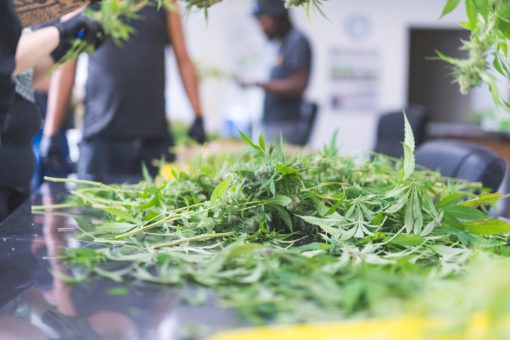Cannabis or marijuana is the most commonly used illicit drug in the United States and is widely used among teenagers and adolescents. Although there may be medicinal benefits for individuals with severe chronic disease, studies have shown that marijuana addiction is possible. Cannabis is composed of two main ingredients: delta-9-tetrahydrocannabinol, more commonly known as THC, and cannabidiol, which is commonly known as CBD. THC is known to produce the mind-altering effects associated with “high” whereas CBD is known to produce the proposed medicinal effects associated with marijuana. Cannabis or marijuana is also known as herb, grass, weed, pot, Mary Jane, and many more. Cannabis use disorder (Marijuana Addiction) has been published in The Diagnostic and Statistical Manual of Mental Disorders, Fifth Edition (DSM5) and is defined by the recent use of cannabis, significantly problematic behavioral or psychological changes, and at least two of the following signs after ingestion: increased appetite, dry mouth, conjunctiva injection and increased heart rate. If you answer yes to the following questions, you may have an addiction to marijuana:
- Do you need a higher dose of marijuana to feel the same effects overtime?
- Do you smoke more marijuana than usually intended?
- Do you feel you are unable to cut down or stop your marijuana use?
- Have you decreased time spent on your regular activities in order to get high?
- Do you continue to use marijuana despite receiving multiple warnings about your behavior?
- Do you use marijuana to escape from your problems?
- Do you use marijuana to feel creative or to relax?
- Are you unable to attend to your daily responsibilities because you are thinking about getting high?
Marijuana Addiction effects on the brain
Marijuana remains a Schedule I substance with the Drug Enforcement Agency and therefore there is major dispute between state and federal lawmakers. 25 states and the District of Columbia have made medical marijuana legal and a handful of states now allow the recreational use of marijuana, making this potential substance of abuse controversial. The present DEA’s policy (i.e. Schedule I) has made medical research on marijuana almost impossible in the United States however marijuana is the most used drug in all of the U.S. Regardless of these confounding views, medical evidence has shown that marijuana can have long lasting effects on the developing brain. The brain does not reach full development until about 25 years of age when the frontal lobe fully matures. Teenagers and adolescents are at the highest risk for impaired short-term memory and concentration; alterations in judgment, coordination, and motor control; and a heightened risk for mental health disorders such as depression and psychosis since their brain is still maturing. Marijuana and any illicit substance is known to have the biggest impact on maturing brains as ingestion of drugs can create axonal injury or prevent certain areas of the brain from developing into their full potential.
What is cannabinoid hyperemesis?
Hyperemesis refers to cyclical vomiting and occurs in multiple medical disorders associated with pregnancy, chemotherapy and chronic cannabis use. Cannabinoid hyperemesis syndrome (CHS) is a rare form of cannabis toxicity that occurs in chronic marijuana users and presents with cyclical episodes of debilitating nausea and vomiting. Research has shown that there is an average daily use in excess of three to five times a day for approximately 12 years before the appearance of symptoms, however some studies have shown that symptoms appear within as little as three years of use.
Introducing everyday coping skills into your life
Coping skills do not have to be these unattainable, lofty ideas but rather they can be concrete everyday activities such as hobbies. Hobbies can also be a way to form bonds between other individuals who share the same interests thereby being a way of social support. Hobbies can be anything of interest that occupies and fascinates an individual. They can include outdoor fitness activities, traveling, learning a new language, enrolling in a cooking class, learning to knit or any other activity that allows the individual to adopt a happy mindset.
